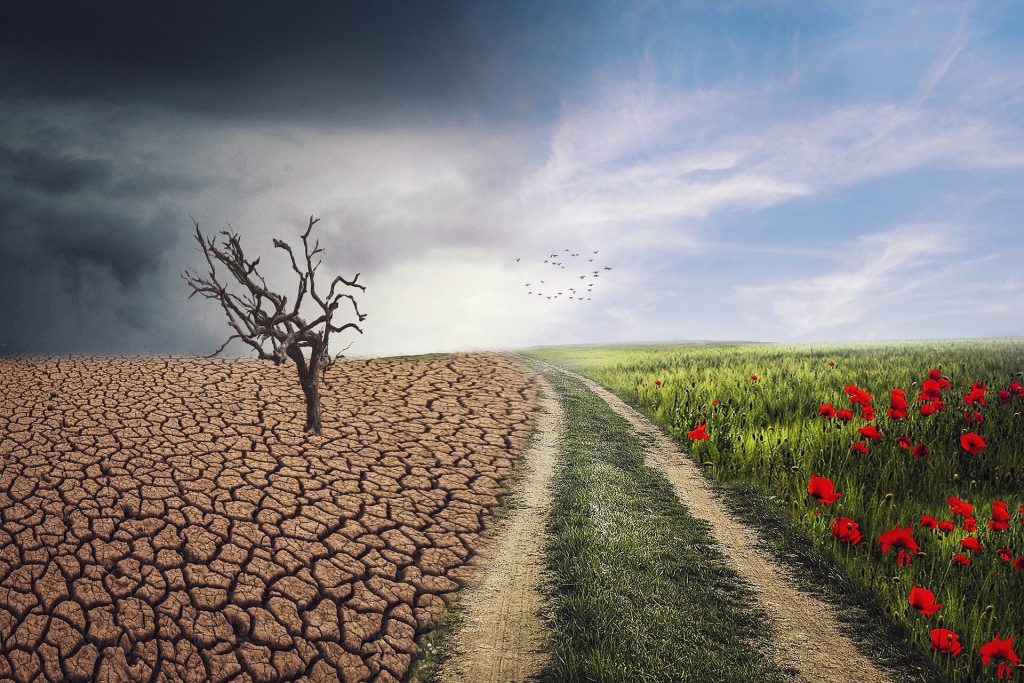
Millions of people are already experiencing the impacts of climate change in everyday life. A few tenths of a degree warmer and the life we know becomes increasingly at risk due to climate extremes such as heat waves, droughts, and heavy rainfall typically associated with flooding.
Affecting every community on—our planet, global warming is a challenge that transcends geo-political boundaries, and is increasingly affecting the global economy.
As a climate scientist specializing in climate extremes, I am often asked: “How can human-induced climate change— mostly driven by fossil fuel combustion and deforestation —make our environment both drier and suddenly wetter at the same time?”
At first glance, it seems contradictory that global warming can fuel both severe droughts and intense rainfall. Yet these extremes are deeply interconnected and, in fact, induced by the same physical mechanism. Understanding this paradox is key to grasping the full scope of climate change’s impact on our world.
When it rains, it pours
Similar to how warm air in a tumble dryer can dry your clothes more quickly, rising temperatures accelerate evaporation intensifying drought conditions by drying out soil and vegetation. At the same time, a warmer atmosphere holds more moisture than it would in a cooler climate. The same volume of warmer air (i.e., air parcels, the “vessels” of the atmosphere), can take up more in terms of total moisture. The Clausius-Clapeyron physical law has been describing this phenomenon for nearly 200 years. Warmer air can contain about 7% more water with each degree Celsius.
The air parcels’ expanded capacity to contain water means that it takes longer to reach the saturation point—when they are “full”—at which time it begins to rain. However, when it does, the total quantity of water that can fall as rain is much higher.
This results in longer dry spells without rainfall in some cases, or more frequent and intense precipitation often associated with flooding in others. Some regions, including many mid-latitude countries, such as Switzerland and the U.S., are affected by both changes: They show observed increases in both heavy precipitation and droughts.
Climate ‘whiplash’ costing us billions
The consequences of climate change are costly and in many cases permanent. Climate change claims both lives and livelihoods, and some types of damage are simply beyond repair.
No region, country, or person in the world is immune to the effects of a worsening climate. For example, scientists have found that climate change was an important factor underlying the recent wildfires in Los Angeles, California—potentially costing multi-billions in damages—by creating ideal conditions for the fires.
Wet conditions—snow and rainfall—in the past few years allowed for the extraordinary growth of vegetation in the Los Angeles area. This California “super bloom” was followed by severe drought conditions that dried out the vegetation and left the region vulnerable to the risk of wildfires. The increasing volatility of the hydroclimate cycle has been described prior to this year’s fires by researchers, including colleagues at ETH Zurich and the Swiss Federal Institute for Forest, Snow and Landscape Research (WSL). They coined the condition “climate whiplash.”
Cascading impacts on supply chains
In Valencia, Spain last autumn, more than 230 people died from flash flooding in urban areas located downstream from an intense, heavy rain event. The flooding wreaked havoc in the region—taking an immeasurable toll on human life and livelihoods. It is estimated that the cost of damaged infrastructure will be upwards of 10.5 billion euros.
The Valencia flood event also disrupted European supply chains more than a thousand kilometers away in Switzerland. High-speed intercity rail and regional train producer, Stadler AG reported severe delays in their manufacturing processes. Some 30 suppliers and external warehouses of the Swiss railway company were impacted by the flooding in Spain.
While climate extremes occur locally, they affect the whole of society both directly and indirectly. The effects of climate extremes ripple through supply chains and impact distant regions, in substantial ways. If we do not succeed in drastically reducing CO2 emissions, the impacts will become increasingly more extreme and costly.
Discover the latest in science, tech, and space with over 100,000 subscribers who rely on Phys.org for daily insights.
Sign up for our free newsletter and get updates on breakthroughs,
innovations, and research that matter—daily or weekly.
False sense of security
Currently, the Earth is about 1.3°C warmer than it was in the early 19th century. To keep the long-term human-induced global warming well below 2°C and to attempt to stabilize it at 1.5°C (about 3°F) more than 200 countries and regions committed to The Paris Climate Agreement, including the United States, which has subsequently withdrawn by executive order of the current U.S. President.
The consequences of global warming will be much more severe in some regions and that fact has given people, and some policymakers, a false sense of security. Climate change will affect each and every one of us—rich and poor alike—regardless of which country we live in or our political affinities. We will all face the consequences. Ignoring human-induced global warming will not make it go away.
I see it as our collective responsibility to take effective measures to mitigate the worsening climate crisis. An early ban on gasoline cars or oil heating, and the replacement of fossil fuels with renewable energies (solar, wind, and hydropower) are measures that could go a long way to slow global warming. Many solutions exist, but they need to be fostered and the transition needs to be accelerated.
Instead, the world’s countries still make yearly fossil fuel subsidies of approximately 7 trillion USD according to the International Monetary Fund. As concerned citizens and consumers, we can raise our voice in society to educate and demand that leaders and decision makers make every effort to ensure that we can drastically reduce CO2 emissions to the atmosphere.
We are all in this together, so let’s manage it together.
Citation:
How climate extremes fuel droughts and heavy rains (2025, February 7)
retrieved 7 February 2025
from https://phys.org/news/2025-02-climate-extremes-fuel-droughts-heavy.html
This document is subject to copyright. Apart from any fair dealing for the purpose of private study or research, no
part may be reproduced without the written permission. The content is provided for information purposes only.








